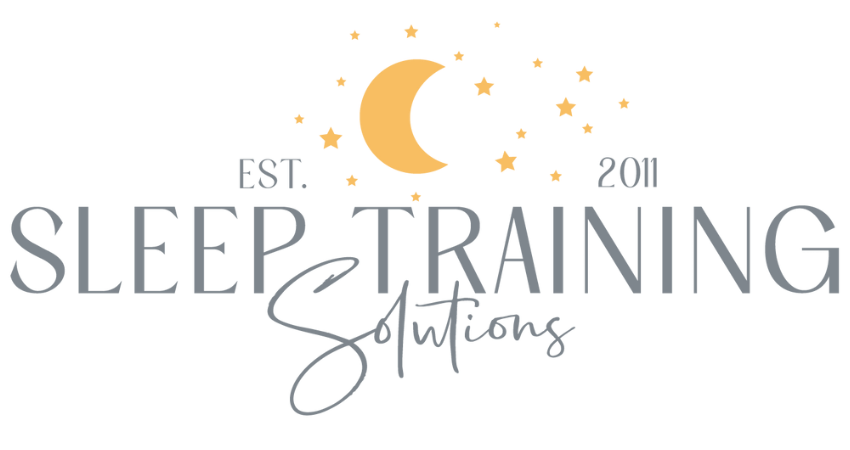How to Wear Out Your Kid on Rainy Days (So They Sleep Well)
Indoor Physical Activities for Toddlers and Preschoolers When You're Stuck Inside
Rainy summer days can completely derail your toddler’s sleep routine. Without their usual dose of sunshine and movement, your child is cooped up and bouncing off the walls—and you’re left wondering how bedtime turned into a three-act drama. If you’ve ever Googled “how to wear your kid out on rainy days so they sleep well,” you’re in the right place.
As a child sleep consultant and mom with many rainy-day marathons under her belt, I can tell you this: movement matters. And when outdoor time is off the table, we have to get creative.
This blog post is packed with age-based, physical indoor activity ideas that are actually fun, energy-burning, and doable in real homes—no gym required. Whether your child is toddling or tumbling, these ideas are designed to help them sleep better by moving more.
🌧️ Why Rainy Days Can Mess with Sleep
When your child doesn’t move enough during the day, you might see:
Resistance at bedtime
Shortened naps
Frequent wake-ups overnight
Extra clinginess or tantrums
That’s because physical movement is directly tied to sleep regulation. Kids need to move—climb, crawl, bounce, spin, jump, and run—to burn off energy and stimulate the brain and body in ways that support healthy sleep.
When kids get that energy out during the daytime, they tend to fall asleep easier, stay asleep longer, and nap more consistently.
The secret? Make movement intentional—even if you're stuck indoors. Below are 30 fun and effective ideas grouped by age to help you do just that.
🏠 Set the Stage: How to Make Space for Movement Indoors
Before jumping into activities, here’s how to prep:
Push furniture to the sides to open up floor space. (Use these sliders if you have carpet and these felt sliders for hardwood floors!)
Use painter’s tape to make hopscotch lines, zigzag tracks, or obstacle courses. (This pack has a variety of colors so you’re not stuck with the typical blue painters tape!)
Pull out a rainy-day bin with special high-movement toys you only use indoors on rainy days.
Want to see all these activities on one page? 👇
✅ Get the list of top-rated activities to wear out your child on rainy days HERE!
👶 10 Indoor Physical Activities for 12–24 Months
Your toddler is learning to walk, climb, and move with confidence. Keep things simple, low to the ground, and full of opportunities to crawl, cruise, or climb.
1. Bubble Pop Chase
Blow bubbles around the room and encourage your toddler to chase and pop them. It’s a great way to improve coordination and balance while keeping them constantly moving. You’ll both end up laughing.
👉 Try this No-Spill Bubble Blower because no one needs spills of slippery bubbles in the living room!
2. Couch Cushion Crawl
Stack cushions or couch pillows on the floor and create a squishy obstacle course. Your toddler can crawl over, tumble across, or sit and bounce. It builds strength while being soft and safe.
👉 Want some versatile foam pieces that can be rearranged for hours of fun? Try this simple but highly-rated 4-piece set!
3. Laundry Basket Push & Pull
Fill a laundry basket with stuffed animals and let your toddler push or pull it around. Add resistance with books if they need more challenge. This is a great full-body workout for their little muscles.
4. Animal Parade Crawl
Crawl on all fours like different animals—bear, cat, crab—and encourage your toddler to mimic you. This taps into their imagination while working on motor planning and body awareness.
👉 Help your child get into character with these fun animal headband ears!
5. Ball Roll and Retrieve
Roll soft balls across the room and have your toddler “fetch” them. Add excitement by rolling them under chairs or behind cushions. It keeps them crawling and moving with purpose.
👉 Take it up a notch and help them work on hand-eye coordination while they’re running after the ball and get this toddler bowling friends set!
6. Tunnel Time
Use a pop-up tunnel or make one with a long cardboard box. Your toddler can crawl through, hide, or race to the other side. This repetitive motion builds endurance.
7. Pillow Climb Mountain
Create a “mountain” from couch pillows or a thick blanket pile. Your toddler will love climbing, falling, and climbing again. Supervise closely, and you’ve got yourself a safe toddler gym.
8. Dance with Scarves
Put on music and give them lightweight scarves (this set has 12 scarves and is under $7 at the time of posting!) to wave, toss, and spin. It adds a sensory element and keeps arms and legs moving.
9. “Follow the Light” Crawl
Use a flashlight to make a moving dot of light on the floor. Encourage your toddler to crawl or toddle after it. This can go on for much longer than you expect!
👉 Use this projector toy instead of a regular flashlight to project fun images (like animals!) on the floor!
10. Teddy Bear Rescue Mission
Hide a favorite stuffed animal across the room and ask your toddler to rescue it. You can crawl through obstacles or under blankets to get there. Add drama with sound effects for extra fun.
👧 10 Indoor Physical Activities for 2–3 Year Olds
This age is all about climbing, jumping, and independence. You can start adding rules and games with simple structure while keeping the movement constant.
1. Painter’s Tape Hop Line
Stick down lines of tape and have your child hop from one to the next. You can vary the distance or make a zigzag path. This builds coordination and is surprisingly tiring.
👉 If you don’t have painter’s tape, use these multi-color reusable floor markers (hop to the red marker, crawl to the blue marker, etc!)
2. Balloon Keep-Up Game
Blow up a balloon and challenge them to keep it from touching the floor. It takes concentration, movement, and giggles. Add a second balloon to make it more chaotic (in a good way).
3. Freeze Dance
Put on their favorite music and play freeze dance. When the music stops, they have to freeze in place. It keeps them moving and builds listening skills too.
👉 Combine “Hot Potato” with the freeze dance game with this potato toss musical plushy!
4. Pop-Up Tent Obstacle Course
Set up a crawl tunnel, blanket fort, or pop-up tent and give them a mission—retrieve the animal, jump inside, crawl through. Change the order and items to keep it fresh.
5. Marching Band Parade
Give them pots, pans, or toy drums and lead a marching parade around the house. Add high knees, stomps, and twirls. It’s a great cardio burst with built-in fun.
6. Animal Movement Cards
Use flashcards or a printable deck showing animals and how they move (hop like a frog, stomp like an elephant). Pull one at a time and act them out. It builds gross motor skills and imagination.
👉 These colorful animal flashcards have 100 cards for less than $8!
7. First Board Game
Sometimes you don’t want to be the creative parent and you want a board game to entertain your child…but when they’re 2-3 years old, most board games are too hard to play and very sedentary.
👉 Try this board game that combines skill development and coordination with fun activities to get everyone up and moving!
8. Laundry Basket Bowling
Set up empty water bottles as pins and use a soft ball to knock them down. Resetting the pins and running after the ball adds sneaky movement. Get them to help “score” and aim.
👉 Want an “official” preschooler bowling set? Get this set that has two balls and has numbers (see if you can knock down the “2” pin!)
9. Paper Plate Skating
Place paper plates under their feet on carpet and let them “skate” around the living room. Encourage spins, twirls, and races. It’s fun, silly, and excellent for balance.
10. Teddy Toss Target Game
Set up baskets or laundry bins around the room. Toss in stuffed animals from different distances. For every miss—they run to retrieve it and try again!
🧒 10 Indoor Physical Activities for 3–5 Year Olds
Preschoolers have seemingly endless energy. You can introduce more complex games and physical challenges that help them burn it all off.
1. The Floor is Lava
Use cushions, rugs, and furniture edges to create safe “islands.” Your child has to move across the room without touching the floor. Add story prompts or missions for extra fun.
👉 Not keen on jumping on furniture? Try these colorful stepping stones instead!
2. Indoor Ninja Course
Set up stations—jump over tape lines, crawl under chairs, balance on pillows, spin three times, then jump into a crash pad. Time them for a “record” to beat! Change it up daily to keep interest.
3. Pillow Sack Races
Use large pillowcases as indoor “sacks” and race from one side of the room to the other. Silly falls are part of the fun. Just make sure there’s a soft landing area!
4. Yoga Freeze Game
Show them 3–5 silly yoga poses, then call them out randomly. They have to jump into the pose and hold it. This encourages balance, body awareness, and burns off big energy.
5. Beanbag toss
Get them moving with a fun-themed bean bag toss game that can be used inside when it’s rainy, or outside for BBQs!
6. Tape Balance Beam
Stick painter’s tape to the floor in a straight line and encourage walking heel-to-toe. Add curves, zigzags, or “don’t fall into the lava!” narration to spice it up.
👉 Does your child want a little more of a challenge? Try this folding balance beam!
7. Broomstick Limbo
Use a broomstick balanced on two chairs and play a limbo game. Lower it gradually and encourage ducking, crawling, or sliding under. Hilarious and active.
8. Stuffed Animal Hide & Seek
Hide animals around the house and send your preschooler running to find them. Give clues to keep them moving—under, behind, inside. Add a timer to level it up!
👉 Need more ideas? Send them on endless scavenger hunts around the house with this ring of cards!
9. Balloon Paddle Battle
Use paper plates taped to wooden spoons as paddles and a balloon as your ball. Bat it back and forth across a line of painter’s tape on the floor. It’s simple, hilarious, and keeps them moving.
10. Hopscotch Circuit
Create a hopscotch board with tape and add other moves between hops (e.g., 5 jumping jacks, crawl under a chair, spin 3x). Have them complete it again and again to beat their time.
👉 Use this large foam die with activity prompts on each of the 12 sides!
🛋️ Tiny Space Hacks: Quick Movement Bursts with No Setup
Even in a small apartment or low-energy day, you can work movement in with these:
Flashlight Tag – Chase the light dot around the floor or walls
Simon Says (Movement Edition) – Jump, spin, hop, crawl
Follow the Leader Dance Train – Add high knees, wiggles, and arm circles
Animal Yoga – Pose like cats, dogs, frogs, and butterflies
Rolling Races – Lie down and log-roll from one end of a room to the other
Wall Push-Ups – Great for rainy-day strength training
Jumping Jack Countdown – 10 to 1 jumping jacks with silly voices
Speed Clean Up Race – Turn cleaning into a movement game
Squat and Toss Game – Squat down to pick up toys and toss into bins
Puppet Show Dance Party – Act out a silly puppet with wild movements
💤 Why This Matters for Sleep
Physical activity doesn’t just help with mood and development—it directly improves sleep. When your child moves their body, especially in the morning and early afternoon, you’ll often see:
Less resistance at bedtime
More consistent naps
Deeper, longer overnight sleep
Even short bursts of movement help. If your rainy day included two 30-minute sessions of physical play, you're setting up your child for a much smoother bedtime.
📦 Bonus: Build a Rainy Day Movement Kit
Keep a bin stocked with:
Painter’s tape
Balloons
Soft balls
Pop-up tunnel
Scarves
Printable animal movement cards
Pop-up tent
Paper plates
Bean bags
Crash pad or thick blankets
A foldable kids indoor trampoline that will ABSOLUTELY wear out your child 😉
✨ Final Thoughts: Rainy Days Don’t Have to Derail Sleep
With a little planning and creativity, you can turn your living room into an energy-burning toddler gym. The best part? You’re not just passing the time—you’re laying the foundation for better naps and smoother nights.
If you’re stuck in a cycle of late bedtimes, short naps, and early wakes—even on active days—I offer 1-on-1 sleep support and an online baby sleep class for families who want real results, fast.
How to Wear Out Your Toddler Indoors on Rainy Days
There are so many pieces to successfully sleep training - Download your free PDF and get weekly sleep tips to help set you up for success!
Related Posts:
This post is for informational purposes only and may not be the best fit for you, your child and/or your personal situation. It shall not be construed as medical advice. The information and education provided here is not intended or implied to supplement or replace professional medical treatment, advice, and/or diagnosis. Always check with your child’s physician or medical professional before trying or implementing any information read here.
Sleep Training Solutions is a participant in the Amazon Services LLC Associates Program, an affiliate advertising program designed to provide a means for sites to earn advertising fees by advertising and linking to Amazon.com and affiliated websites. I will earn a small commission, at no additional cost to you, if you purchase them.






